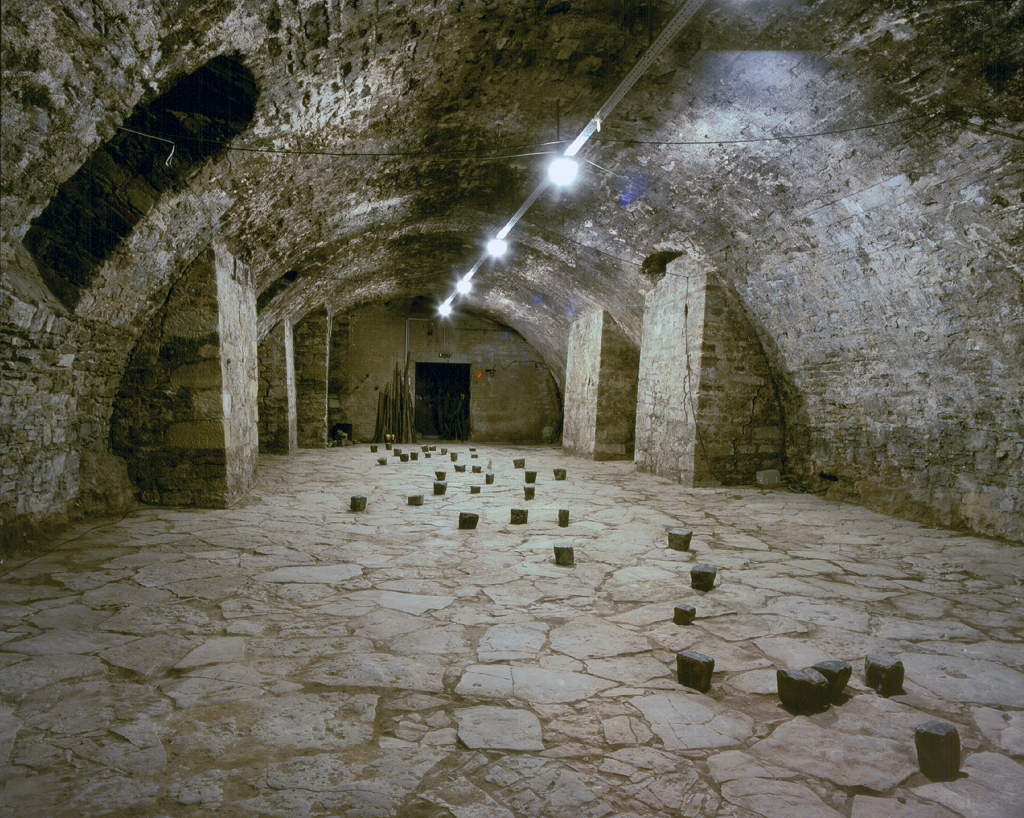After Hours (The Birds Are Back)
The soldier turns away to the trees around us. The others also. They listen closely. No, it's not the silence. They have noticed nothing, did not hear the silence. It's me who is shocking them. Nothing else, it seems. - No more birds, I say, continuing my thought. The smoke from the crematorium has chased them away. Never again will there be birds in this forest…
Jorge Semprun, "Writing or Life", 1997
After Hours is inspired by Jorge Semprun's two WWII novels "The Long Voyage" and "Writing or Life". In 1945, at the liberation of the Buchenwald concentration camp, prisoner Semprun ( later a renowned novelist, scriptwriter and Spain's Minister of Culture) explains to Allied soldiers why the birds had forever abandoned the site, Germany's largest forest preserve. Fifty-five years later in 2000, Weimar celebrates itself as Cultural Capital of Europe, and After Hours proclaims that the birds have finally returned to Buchewald.
This work is about traumas always present in a landscape where creation and destruction have so often collided. Weimar (center of the German Enlightenment) and Buchenwald (one of the largest Nazi concentration camps within Germany) are one and the same place. Conflicting ideologies, the human and the inhuman, Goethe and Hitler, beauty and horror, life and death: the best and worst of western culture and history are confronted face to face.
Commissioned by The Museum of Modern Art in Weimar for the Cultural Capital Exhibition, After Hours engaged local artists and residents in several actions recorded in photographs and films:-
- After Hours: immersive site-specific installtion in the dungeon of the Museum with beech trees, Buchenwald stones, 4-channel audio, spotlight, speakers
- After Hours I-X: photographs of the site installation.
- The Birds Are Back I-VI: photographs conjure the return of the birds to Weimar
- Die Rückker der Vögel (The Birds Are Back): video (16') documents a public performance in the streets of Weimar by students parading a sandwich-board anouncing “The Birds Are Back”
- Weimar Klassic I-XXX: photographs interpret landscapes of classical Weimar
- The Rise and Fall of the Modern: photographs explore degenerate art and National Socialist ideology
- Washing The Stones: 1-channel HD projection of a performance in the site installation (26')
Works can be shown separately or as a multimedia room installation.
In Germany between 1937-1939, Hitler’s National Socialist government was consolidating its dictatorship over its own people. On the hills of the Ettersberg Forest near Weimar, where Goethe, Schiller, Wagner and other German classicists gave Europe its highest cultural expression, the Nazis established Buchenwald concentration camp. Its first prisoners were dissidents including teachers, writers, social democrats, communists and anyone else who opposed Hitler. Most of them were worked to death clearing the forest and constructing barracks. By far the worst job was building the “road of death” linking Buchenwald to the Weimar train station five miles away. The stone used for this was a heavy black limestone quarried from a valley in the Ettersberg, and crudely formed in a wedge shape to be set in the ground. By the time the camp was liberated in April 1945, Buchenwald would become known as the “United Nations” of the concentration camps. Not many of the prisoners who worked in the quarries survived, but the road's surface was smoothed over by thousands upon thousands of feet trudging over it. It is still there today.
For the original installation in the dungeon of the Kunstsammlungen zu Weimar (Museum of Modern Art, a 12th C. castle restored by Goethe while he was Minister of Culture in the late18th C.), stones from the path of death, quarried by Buchenwald prisoners to build a road from the Weimar train station to the prison camp in the late 1930’s. We also recorded ambient bird sounds from the forest, and we brought these two elements into the space. Buchenwald stones were placed atop Goethe’s stones, confronting the two faces of German history. As the visitor approaches the darkened space, he hears the soundscape of birds ‘flying’ overhead. A solitary spotlight confronts the spectator with long shadows and blinding light. In the darkness, a shadow of a person can be seen washing the stones (ritual washing of the dead). The visitor can experience the space from a distance (like a movie screen) or walk through it for a more physial and sensorial engagement with the work.
Like memory, which is transcient, fragile and uncertain, the intention in this work is not only for it to be experienced in-situ, but als to be transported, through diverse media, to a variety of spaces and locales.









Kunstsammlungen zu Weimar, 1999
National Gallery, Prague, 2001
Photographs, found sound, single-channel projection, Buchenwald stones